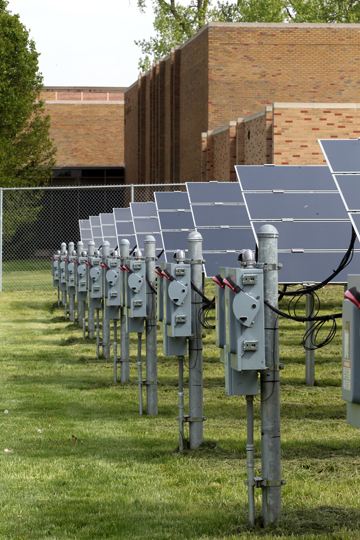While The University of Toledo experienced a solar eclipse last month, the solar panels on Main Campus and Scott Park Campus lost an “effectively inconsequential” amount of power production as the moon obscured as much as 84 percent of sunlight in the middle of the day.
“Much larger deviations result from daily or seasonal weather events,” according to a team from the UT Department of Physics and Astronomy that modeled and analyzed power output during the eclipse Aug. 21.

The solar photovoltaic array on Scott Park Campus lost an “inconsequential” amount of electrical energy generation due to the solar eclipse Aug. 21, according to UT researchers.
“This is the typical production for a partly to mostly cloudy day,” Dr. Randy Ellingson, UT professor of physics, said.
The solar photovoltaic array on Scott Park Campus, which is 35 times larger than the R1 array on Main Campus and generates approximately 1,300,000 kWh of electrical energy during a typical year, lost approximately 1,170 kWh of electrical energy generation due to the eclipse.
“The eclipse resulted in the loss of less than 0.1 percent of annual production,” Ellingson said.
The UT team, which includes graduate student David Raker, will share its monitoring data with MDA Information Systems LLC, a Maryland company working to provide forecasts to predict the temporary shortfall from solar arrays up to three days in advance to help grid operators make changes to meet electricity needs for customers.
Toledo is in the path of totality for the solar eclipse in 2024.